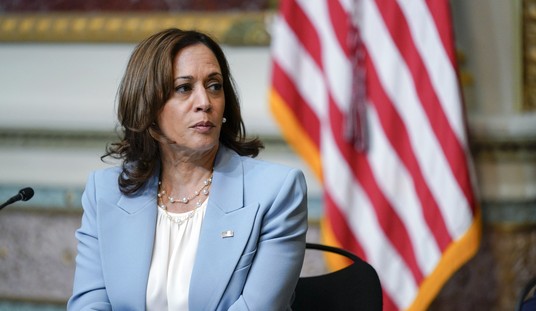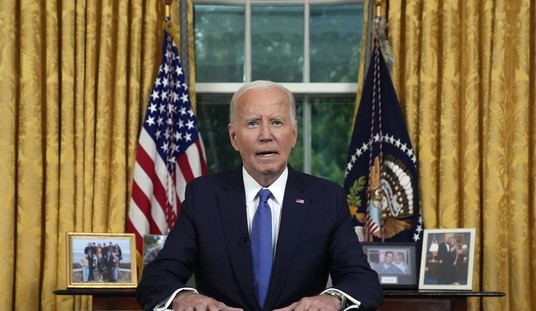After seven-plus years of President Obama's underperforming, low-wage, part-time economy, Americans are desperate for a new leader to fix what's wrong with our country.
If anyone needed evidence of how bad things are, the administration reported last week that the U.S. economy was barely growing at a minuscule 1.4 percent annual rate in the last three months of 2015.
It doesn't get reported on the nightly network news, but the fourth-quarter economic figures that contributed to the weak GDP growth rate were dreadful. Corporate profits plunged 11.5 percent, the worst decline since 2008 at the height of the Great Recession. Pretax earnings fell 3.1 percent, the most in seven years.
Economists said they hoped economic growth would be a bit better in this quarter, "but not as much as they initially anticipated, with capital spending remaining weak and businesses continuing to pare back stockpiling" in the face of weak sales, USA Today reported.
Another problem is "sluggish business investment," the newspaper said. "Many economists expect growth of less than 2 percent in the first quarter."
Sluggish 2 percent growth has been the economy's "new normal" throughout Obama's painful presidency, and this year is no exception. But what about next year, when a new president will be sworn into office, promising to improve on Obama's poor economic record?
Don't hold your breath. Hillary Clinton is running on a platform to raise taxes on "wealthy Americans," i.e., investors, and a higher minimum wage that would result in a weaker economy and fewer jobs.
Recommended
Then there's Donald Trump, who wants to slap damaging tariff taxes on imports, sharply raising consumer prices across the board. That would surely ignite retaliation by our trading partners around the world and send both sides into a global recession.
That's the conclusion of a study by Moody's Analytics, a respected economics research firm. It was asked by The Washington Post to create an economic model to measure the impact of Trump's tariff plan. The bleak headline that ran across the Post's story of the study's findings: "A Trump trade war could cost the U.S. millions of jobs."
Trump's proposed tariff taxes on China and Mexico, 45 percent and 35 percent respectively, "would, in fact, sock it to China and Mexico," the Post reported. "Both would fall into recession, the model suggests, if he levied his tariffs and those two countries retaliated with tariffs of their own."
Unfortunately, the U.S. "would fall into recession, too. Up to 4 million American workers would lose their jobs. An additional 3 million jobs would not be created that otherwise would have been had the country not fallen into a trade-induced downturn," the Post reported.
Why would this happen? As prices rise on imports from China and Mexico, biting a larger chunk out of consumer budgets, spending would decline, resulting in a weakened economy.
If China and Mexico imposed higher tax tariffs on U.S. exports, it would lead to layoffs among U.S. producers who depend on their sales to foreign countries.
The study forecasts that the U.S. economy would be in a recession in a year -- and would be 4.6 percent smaller by the end of 2019 if Trump's tariffs were levied and both countries responded by imposing similar taxes on our exports.
"This is a pretty ugly scenario, one that I think any rational person would want to avoid," said Mark Zandi, chief economist for Moody's Analytics.
Americans who are old enough to remember will recall the punishing Smoot-Hawley tariffs that Congress imposed on over 20,000 imported goods in 1930 as our economy slipped into the Great Depression.
Why is Trump proposing this against all evidence that it will hurt Americans and our fragile economy? He's seeking to broaden his support among labor union voters whose extremist, far-left leaders have made global trade Public Enemy No. 1, and he's willing to buy into it hook, line and sinker.
Ronald Reagan drew broad political support among the country's union voters in the 1980s. They were known as "Reagan Democrats." But he reached out to them with proposals to grow the economy and jobs through tax cuts and increased trade, with the North American Free Trade Agreement (NAFTA) that began with Canada. President Clinton later expanded it to include Mexico.
Reagan ended Jimmy Carter's recession two years after taking office in 1981, running up economic growth rates of between 5.6 percent and 7.7 percent in the last half of 1983.
Trump's plan to start a trade war with the world would irreparably weaken our economy and hurt middle-class and lower-income Americans and their families. But he is betting that voters will buy into his trade tariff rhetoric and scare tactics, which are made up as he goes along.
The Post's fact checker, Glenn Kessler, gave Trump four Pinocchios this week for dishonesty. Example: "They (Japan) have cars coming in by the millions, and we sell practically nothing," Trump said earlier this month -- promising to bring car companies back to Michigan.
But Japanese car companies (and European ones as well) have auto factories across our country, creating jobs for American autoworkers, mostly in right-to-work states in the South. Those autoworkers built 3.8 million of them in 2014, plus 4.3 million engines, and their firms bought $66 billion in U.S. automotive parts. Honda exported more U.S.-made cars than it imported from Japan.
If Trump were Pinocchio, he would have a very long nose indeed.

























Join the conversation as a VIP Member